Last Updated: December 8, 2021
HMO Quality and Consumer Satisfaction Data
The health plan you choose can affect the quality of medical care that your family receives. Some plans do a better job helping you to stay healthy and to get the medical care you need when you are sick. If your employer allows you to choose a health plan, you may want to consider how successful the plans are in providing quality care.
In Wisconsin, Health Maintenance Organization (HMO) plans are required to develop quality assurance plans to monitor the quality of the health care that their members receive. One way they do this is to collect data on how often members receive certain medical services. They can then compare their performance to national standards. The HMOs are required to submit to the Office of the Commissioner of Insurance a report every year that includes a sample of this data. The report includes the results of five Healthcare Effectiveness Data and Information Set (HEDIS®) measures and two Consumer Assessment of Healthcare Providers and Systems (CAHPS®) questions. The measures chosen are intended to cover a broad range of medical services in order to provide you with an overview of the health plan's performance. The graphs below summarize the data provided by the HMOs. The Wisconsin average is based on the reports submitted to OCI, including the HMOs that do not submit data to the NCQA for Quality Compass®. The graphs also include the national average score as reported in the 2015 Quality Compass and the 2016 Quality Compass.
HEDIS measures whether the health plan and its doctors are providing medical care that is generally recommended to prevent and treat disease. It is developed and maintained by the National Committee for Quality Assurance (NCQA), a nonprofit organization that reviews and accredits managed care organizations. The NCQA specifies how the data will be collected to ensure that it is done in a consistent way which will allow you to compare the performance of different plans. HEDIS measures cover a broad range of over 60 different health care services.
Quality Compass is NCQA's comprehensive national database of health plans' HEDIS and CAHPS results. It contains plan-specific, comparative and descriptive information on the performance of hundreds of managed care organizations.
CAHPS is a consumer satisfaction survey that is sponsored by the Agency for Healthcare Research and Quality (AHRQ), an agency in the U.S. Department of Health and Human Services. The CAHPS surveys are designed to assess consumers experience with all types of health care systems.
Health plans in Wisconsin are not required to be NCQA-Accredited. However, in the reports to OCI, the HMOs are required to follow NCQA standards in collecting the data for the HEDIS scores. HMOs that are not accredited are not required to submit data audited by an outside organization. For the two CAHPS consumer satisfaction questions, the HMOs were asked to follow NCQA guidelines or to explain any variations from the guidelines in the report. No HMOs reported any variations.
If you would like to know more about how your health plan's performance compares to other plans, you may wish to contact the plan and ask it if there is any other data available. You should also carefully review any information that you receive from your employer during your open-enrollment period. Many employers include plan performance and consumer satisfaction information in their enrollment materials. Information is also available on NCQA's website at
reportcard.ncqa.org.
Jump to Graph:
The source for data contained in this publication is Quality Compass 2015 and Quality Compass 2016 and is used with the permission of the National Committee for Quality Assurance (NCQA). Any analysis, interpretation, or conclusion based on these data is solely that of the authors, and NCQA specifically disclaims responsibility for any such analysis, interpretation, or conclusion. Quality Compass is a registered trademark of NCQA.
However, the data contained in the "Time Spent with Physician" graphs is from The CAHPS Questionnaire and not from the Quality Compass.
HEDIS® is a registered trademark of the National Committee for Quality Assurance (NCQA).
CAHPS® is a registered trademark of the Agency for Healthcare Research and Quality.
Quality Compass® is a registered trademark of NCQA.
[Back to Top]
Breast Cancer Screening
The Breast Cancer Screening rate estimates the percentage of women ages 50-74 enrolled in a health plan who had at least one mammogram in the past two years.
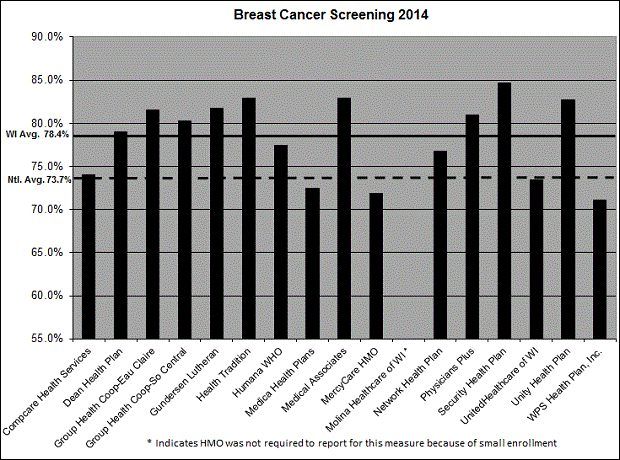
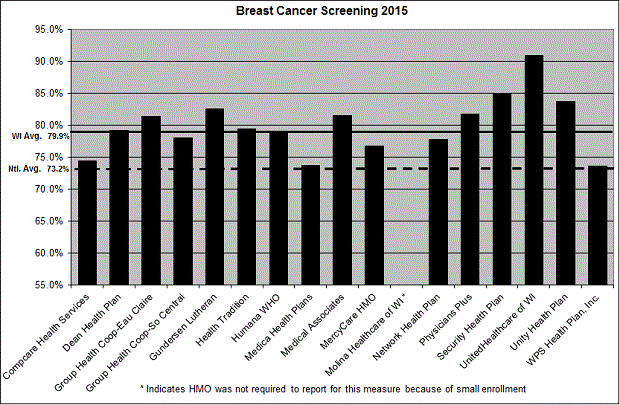
Reprinted from Quality Compass 2015 and Quality Compass 2016 with permission from the National Committee for Quality Assurance.
[Back to Top]
Cervical Cancer Screening
The Cervical Cancer Screening rate estimates the percentage of women ages 21-64 who were screened for cervical cancer.
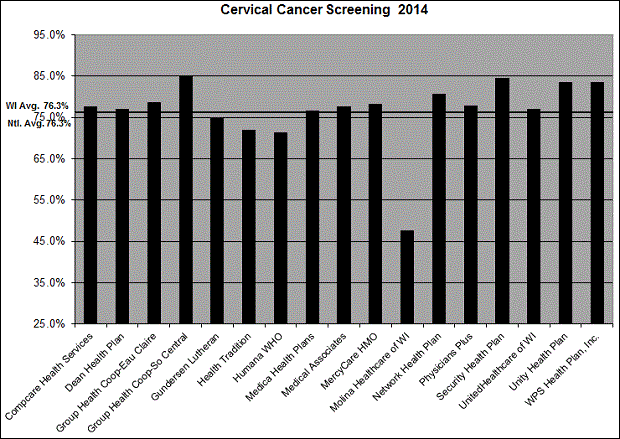
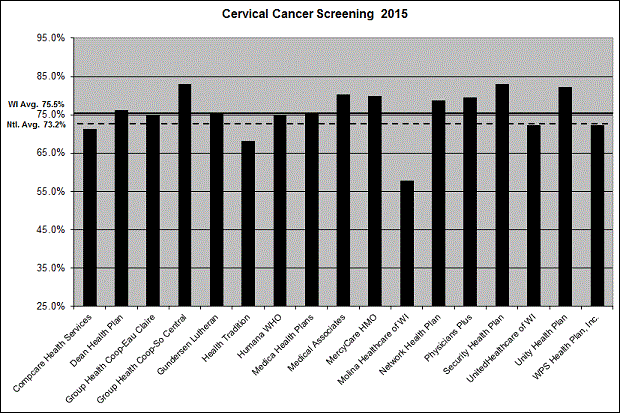
Reprinted from Quality Compass 2015 and Quality Compass 2016 with permission from the National Committee for Quality Assurance.
[Back to Top]
Comprehensive Diabetes Care - Eye Exams
The Comprehensive Diabetes Care measure includes several important features of effective, multiphasic management of diabetes and its complications. The eye exam measure estimates the percentage of health plan members with Type 1 and Type 2 diabetes that were ages 18-75 who had an eye exam during the last two years to watch for disease that can lead to blindness.
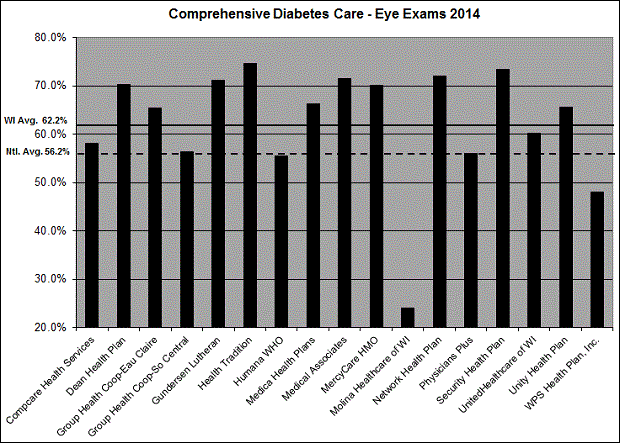

Reprinted from Quality Compass 2015 and Quality Compass 2016 with permission from the National Committee for Quality Assurance.
[Back to Top]
Follow-Up After Hospitalization for Mental Illness - 7 Days
The Follow-Up After Hospitalization for Mental Illness measure indicates the percentage of health plan members age 6 and older who were hospitalized for selected mental health disorders and were seen by a mental health provider within 7 days after leaving the hospital.
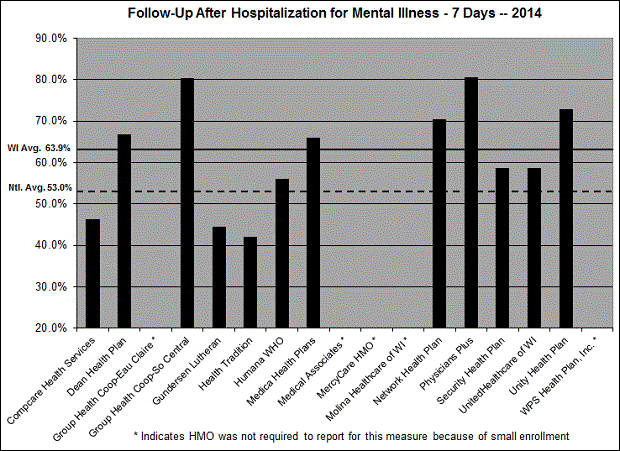
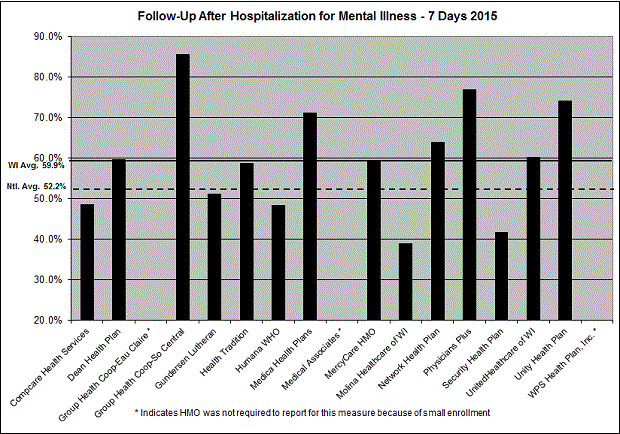
Reprinted from Quality Compass 2015 and Quality Compass 2016 with permission from the National Committee for Quality Assurance.
[Back to Top]
Follow-Up After Hospitalization for Mental Illness - 30 Days
The Follow-Up After Hospitalization for Mental Illness measure indicates the percentage of health plan members age 6 and older who were hospitalized for selected mental health disorders and were seen by a mental health provider within 30 days after leaving the hospital.
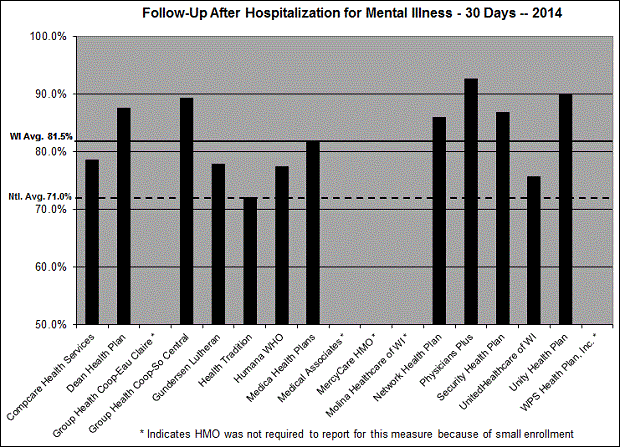
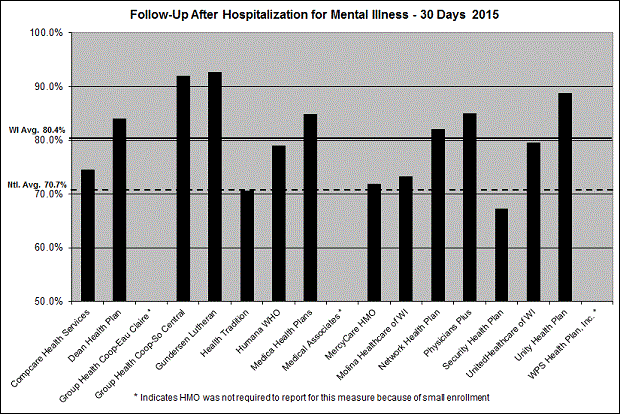
Reprinted from Quality Compass 2015 and Quality Compass 2016 with permission from the National Committee for Quality Assurance.
[Back to Top]
Children's Access to Primary Care Providers
The Children's Access to Primary Care Providers measure indicates the percentage of children age 12 months through 24 months who had at least one visit to a primary care practitioner during the measurement year.
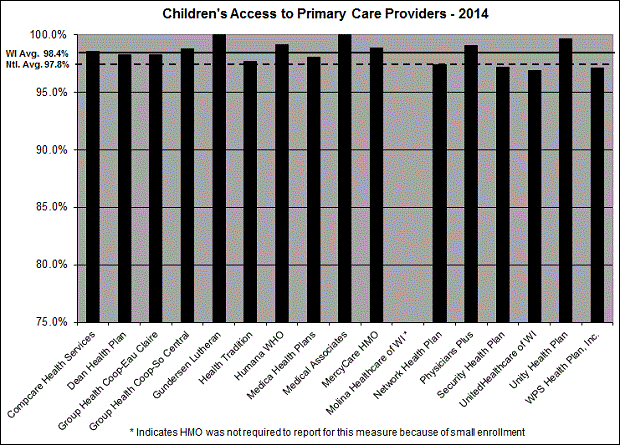
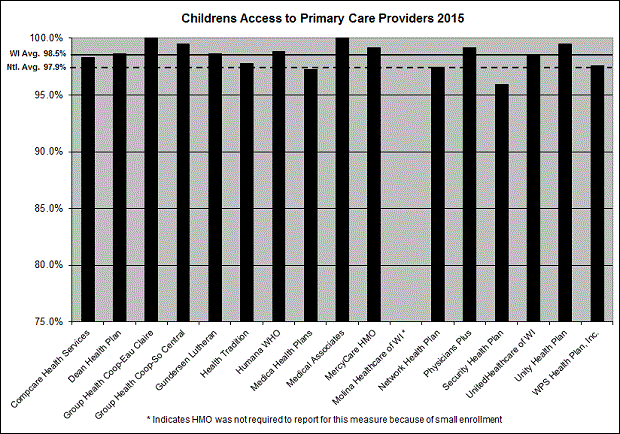
Reprinted from Quality Compass 2015 and Quality Compass 2016 with permission from the National Committee for Quality Assurance.
[Back to Top]
Rating of Health Plan
For the Rating of Health Plan measure, respondents were asked to rate their health plan, with 0 equaling worst health plan possible and 10 equaling best health plan possible. The measure indicates the percentage of members who rated their health plan with an 8, 9 or 10.
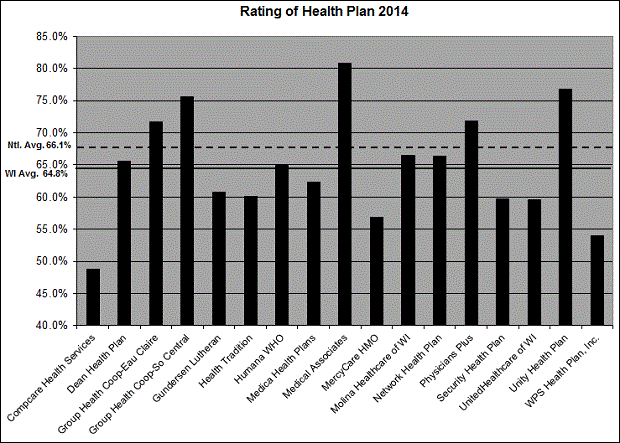
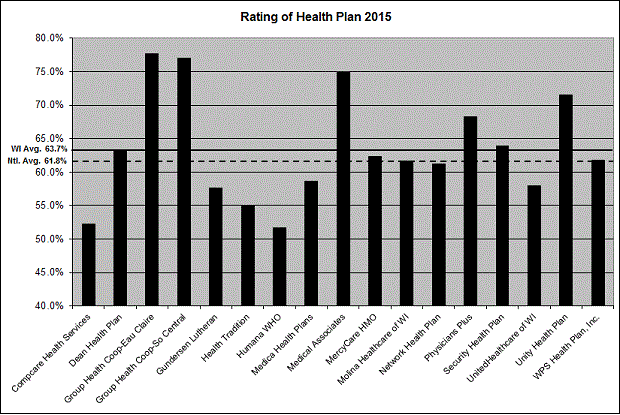
Reprinted from Quality Compass 2015 and Quality Compass 2016 with permission from the National Committee for Quality Assurance.
[Back to Top]
Time Spent with the Physician
For the Time Spent with the Physician measure, members were asked how often doctors or other health providers spent enough time with them in the last 12 months. Members could answer "Never," "Sometimes," "Usually" or "Always." The measure indicates the percentage of members who answered Always or Usually.
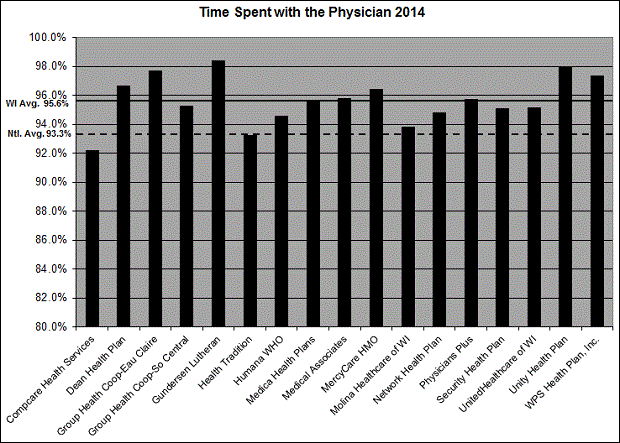
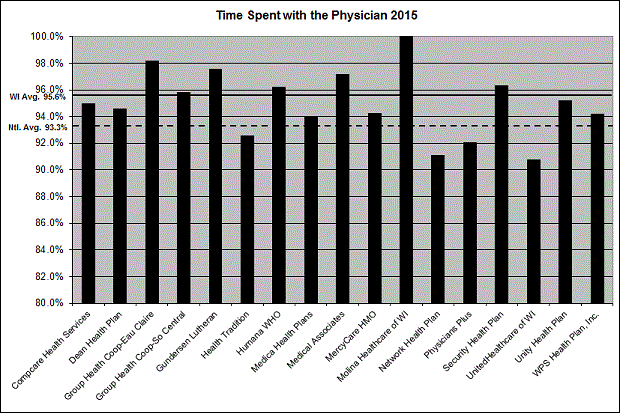
Reprinted from Quality Compass 2015 and Quality Compass 2016 with permission from the National Committee for Quality Assurance.
[Back to Top]